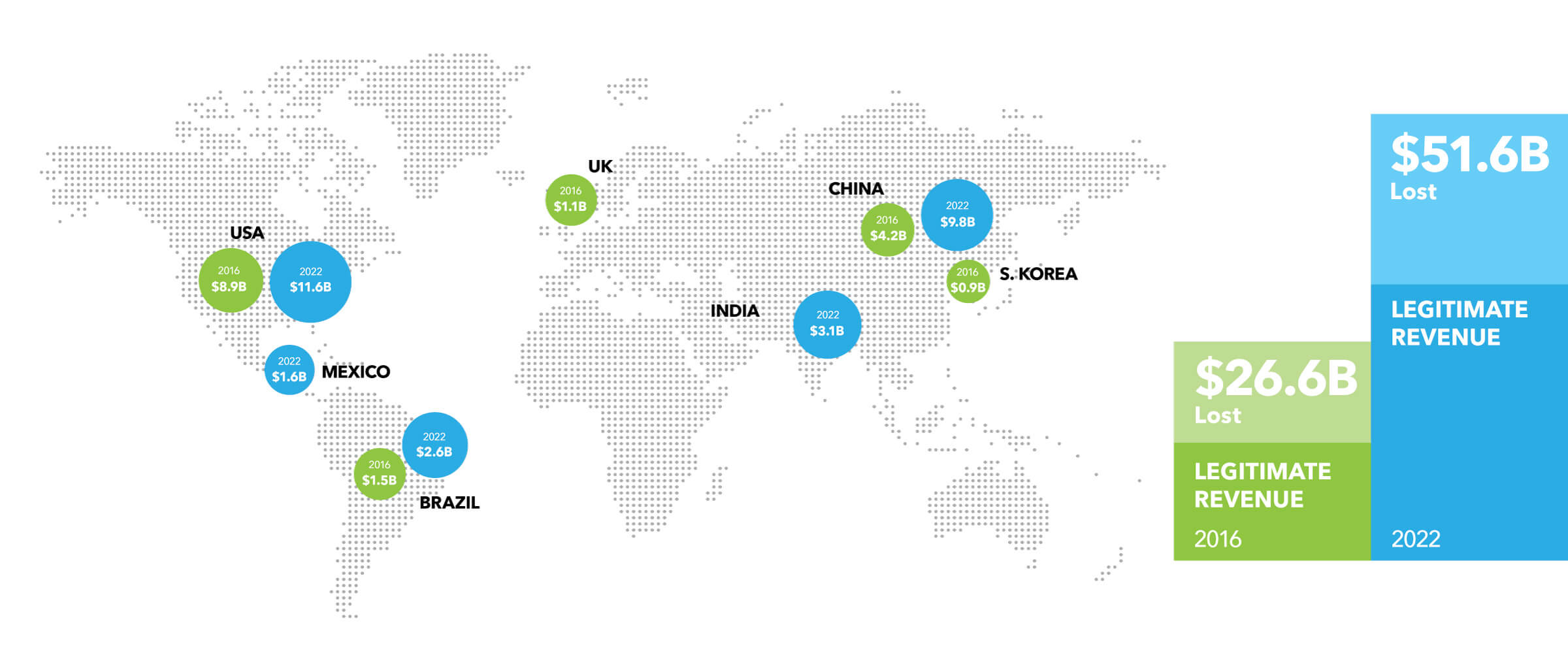The “Golden Age of Streaming” — the era that the Economist magazine is calling a “$650 Billion Binge” — is just starting. Shows like Breaking Bad, Game of Thrones, and Transparent have ushered in a new generation of entertainment marked by its large numbers of international viewers and acclaimed programming. In 2019, subscriptions to online (OTT) video-on-demand services around the world amounted to 1,072,000, surpassing cable by far with 613.3 million subscribers. The OTT VOD subscriptions are expected to rise to 1,129,600 in 2020.
When it began, cord cutting was easy and less expensive. Those who dropped their cable TV to go with Netflix and Hulu were few and far between. Now, the large numbers of consumers who are streaming is attracting big-name players like Disney+, Apple TV+, Comcast’s Peacock, and AT&T’s HBO Max, WarnerMedia, NBCUniversal — all challenging the predominance of Hulu, Amazon Prime, and Netflix.
More and more it’s shaping up to be a race for market share in an increasingly crowded arena. Not only are consumers finding their viewing experience more fragmented and costly, OTT streaming service operators are experiencing more security challenges.
Device fragmentation causing ongoing challenges for OTT video distributors
Device proliferation and fragmentation are big challenges for OTT video distributors and extends across smartphones, tablets, PCs, TVs, and TV media players. The lion’s share of these devices natively support one of three DRMs associated with the dominant operating systems: Apple FairPlay Streaming with iOS, macOS, and tvOS; Microsoft PlayReady with every Windows device and some Android devices; and Google Widevine with every Android device.
OTT streaming service providers also must contend with the fragmentation within the generations of operating systems. This is especially challenging when it comes to dealing with Android devices, which in the smartphone sector accounts for 87% of the global user base according to International Data Corporation (IDC).
Known as “Android OS fragmentation,” it’s a phenomenon where for each device model, there are multiple versions of the operating system — all compounding the complexity of the security requirements. There are now six Android OS versions running on anywhere from 4% to 37% of the Android device base and over 24,000 different models of devices running on those OSes as reported by both AppBrain and OpenSignal.
While PCs and smart TVs, or TVs using IP media players, remain the preferred platforms for viewing long-form video, tracking just smartphones and tablets, ScientiaMobile reports that fragmentation is increasing about 20% annually, with an astounding 63,000 device profiles as of 2019. However, any attempts to limit targeted device profiles to the most popular models severely curtails potential market reach of OTT operators.Digital delivery systems making it easier for pirates, with content theft on the rise
Illicit access and re-distribution have become easier for hackers, with content readily available for those illegally looking to consume it. Unlike previous closed systems, today’s digital delivery system makes it easier for pirates to steal and re-stream illegal content anywhere in the world, using the same type of infrastructure used by the service providers themselves.
In some cases pirates record and retransmit video directly from large TV screens; this results in a surprisingly good viewing experience for pirate site users. An even more robust viewing experience is attained with the use of high-bandwidth digital content protection (HDCP) strippers, which makes it easy to pull unencrypted video right out of the HDMI link.
Between 2016 and 2022, Digital TV Research estimates that piracy losses for online TV and movie content will nearly double to US$51.6 billion across 138 countries.

Video Piracy: Ecosystem, Risks, and Impact estimates that if just 10% of pay-TV subscribers discontinued pay-TV services in favor of video delivered by pirates, the 2023 loss to those operators could approach $6 billion.
Piracy challenges posed by live sports streaming
Since then sports programming has become a part of leading OTT TV service bundles worldwide, drawing ever larger audiences to online consumption. For example, Amazon has launched live streaming of Thursday Night NFL Football, Premier League Soccer, and other high-profile events.
Far greater numbers of viewers are generated by championship events like the FIFA World Cup, Super Bowl, and Cricket World Cup. The all-time record for concurrent views was set in 2019 when 25.3 million users tuned into Indian OTT distributor Hotstar’s coverage of the Cricket World Cup semi-final.
The meteoric rise of live sports streaming such FuboTV, Hulu + Live TV ESPN, PlayStation, and NFL Game Pass has also led to more theft of live premium content.
Recently, YouTube Live, and Facebook Live have become centers of illicit activity as well. And there’s a growing number of illicit sports viewing occurring with consumers restreaming video from their smartphones and tablets.
OTT streaming service providers must be mindful of how live sports streaming impacts their ability to use DRM-based protection, without impeding the user experience. For any distributor, the rising popularity of streaming sports is making these services essential to subscriber acquisition and retention.
The expanding application of Enhanced Content Protection in Licensing
The emergence of 4K/UHD and improvements in display quality enabled by high dynamic range (HDR) modalities are big factors behind the licensing policies that require enhanced protection against piracy. The slow ramp up to UHD-formatted video services is giving way to rollouts worldwide, which are being driven by mass market penetration of UHD TV sets and widespread recognition that HDR provides a better viewing experience.
According to Futuresource Consulting, global shipments of UHD sets will account for 52% of the market by 2020. At this point, the vast majority of television households in North America, Western Europe, Japan, South Korea, and many other parts of the world will be watching TV on big displays. Support for UHD and HDR is very important to the OTT providers’ ability to compete.
So far, the dominant sources of UHD content have been OTT providers including Netflix, Amazon, Hulu, UltraFlix, Fandango Now, VUDU, iTunes, and YouTube. Nearly all of the original content produced by Netflix and Amazon is offered in UHD and much of it is enhanced with HDR. Along with connected smart TVs, streaming media players (SMPs) that bring OTT content to TV sets are becoming a big factor in the expanding role of UHD in this market.
Growing alarm over these piracy losses is prompting enforcement of new licensing terms and requirements from the Enhanced Content Protection (ECP) specifications produced by MovieLabs, the motion picture industry technology consortium. Distributors can no longer consider MovieLabs’ ECP specifications something to worry about in the future, and instead have to support them now.








